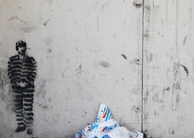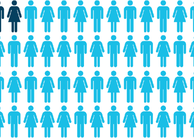Student VoicesResearch Shows Lack of Support for Transgender and Gender-Nonconforming Youth in U.S. School Systems
By
2010, Vol. 2 No. 01 | pg. 1/2 | »
KEYWORDS:
Transgender children are some of the most vulnerable students in America’s schools. Nobody knows how many there are, and very few educators know what to do with them. Despite extensive advocacy efforts, trans youth are subjected to bullying and harassment in the classroom; diagnosed with nonexistent learning disabilities and psychological problems; and generally misunderstood by their doctors, teachers, and classmates. As a result, these students get lower grades than their classmates and are less likely to pursue higher education. The lack of a basic understanding of trans youth puts them at an extremely high risk for failure and unsatisfactory performance in schools. (Authors note: “Transgender” and “trans” are used interchangeably to refer to transgender, transsexual and gender-nonconforming individuals. The term ‘transgender’ generally describes people whose physical sex characteristics do not match their psychological gender identity.) I spoke with Kim Pearson, the executive director of the national advocacy organization TransYouth Family Allies, to learn more about the struggles faced by transgender and gender-variant children in schools2. The first thing she mentioned was transgender children being diagnosed with nonexistent conditions: in her experience, trans students who have not come out to themselves or those around them are often labeled as “dull or difficult,” and diagnosed with a number of learning disabilities because of their poor performance in school (81).In other words, students get diagnosed simply because they are underachieving – the school treats the symptoms of the problem rather than the cause. While this can happen to other groups of students, transgender youth are particularly vulnerable because so few people can recognize the cause of their problems. Misdiagnosis of transgender youth also occurs in the psychological field. While there is little published research in this area (Pearson’s organization is working on compiling data, but suffers from insufficient resources), a young transgender man I spoke to offered numerous instances of his peers being diagnosed and treated for a series of conditions: attention deficit disorder, phobias, sexual abuse, bipolar disorder, schizophrenia, and autism-spectrum disorders. He also echoed the sentiment that doctors “diagnose symptoms rather than the real issue,” and noted that it can take years for medical professionals to figure out the actual cause – if they ever do (Anonymous). Arlene Lev, a licensed clinical social worker with twenty-five years of experience working with LGBT people, supports these claims: she reports that “clinical experience yields frightening narratives of clients who have been misdiagnosed, mistreated, and misguided by uninformed clinicians (19).” If teachers and medical professionals had a better understanding of trans youth and were equipped with the tools necessary to identify them, these types of misdiagnoses would be much less common. Even though transgender children are often misdiagnosed, they can also suffer very real psychological effects from their experiences in school. Common sense tells us that stress caused by the intolerance of others is incredibly tough on young people –as Pearson puts it, “years and years of stuffing who you are takes a huge toll, and there are messages everywhere telling you [that] you are subhuman (40-41).” Transgender youth look at the experiences of other minority students and are scared away from coming out; when they finally do, they’ve already suffered severe amounts of psychological trauma. Dr. Kathy Gainor, an associate professor at Montclair State University, describes “adjustment difficulties...anxiety and posttraumatic [sic] stress symptoms,” and depression as just some of the barriers faced by transgender people (151). But trans youth are not inherently psychologically damaged, despite the listing of “gender identity disorders” in the Diagnostic and Statistical Manual of Mental Disorders (Harry Benjamin). Rather, these effects are caused by outside forces – the intolerant and hateful attitudes and oppressions faced every day by transgender people. The shame caused by this intolerance has a significant impact on the psychological issues of trans youth. Dr. Leah Schaefer of the World Professional Association for Transgender Health explains the thought process that shame causes, which begins as children become aware of their transgender identity: When something is wrong there must be a culprit--someone must be blamed. Since the emotion emanates internally, the child can blame no one but itself – ‘It must be me. I must have done something bad or wrong or sinful to be this way – so different from others.’ (qtd. Prosser 11) Children do not develop these ideas in a vacuum – it is well known that the messages sent by media, parents, religion, and other societal influences have profound effects on child development. Even in the twenty-first century there are many who do not appreciate diversity, especially when it comes to gender. As a result, transgender children are targeted by an incredible number of oppressive forces – forces which they are ill-equipped to fight against. One of the most devastating of these forces is the bullying and harassment that so many trans youth experience. A 2007 survey conducted by Dr. Joseph Kosciw of the Gay, Lesbian and Straight Education Network (GLSEN) found that over 85% of trans students reported verbal harassment based on their sexual orientation and gender identity 3. Nearly half (49.5%) reported physical harassment based on these characteristics, and a third (34.1%) reported being physically assaulted4 (Kosciw 80-81). Transgender students get harassed much more often than their classmates: a 2005 study found that transgender students were over four times more likely to be verbally harassed because of their gender expression (Harris, see graph). The dramatically higher frequency of such victimization among transgender people is alarming, and as one would assume, has significant effects on a student’s ability to learn. GLSEN Senior Research Associate Emily Greytak learned exactly what these effects were while preparing a 2009 report entitled Harsh Realities. Her research found that the grade point averages of transgender students who were frequently harassed were significantly lower than those who were bullied less often. For example, trans students who regularly experienced harassment based on their sexual orientation had an average GPA of 2.2, compared with a GPA of 3.0 for trans students who were never or rarely harassed (Greytak 25). By contrast, frequently harassed LGBT students as a group had an average GPA drop of four points (Kosciw 83-86). In other words, bullying and harassment is twice as detrimental to transgender students as it is to their lesbian, gay and bisexual peers. If teachers had a better understanding of trans issues, they could educate their students and stop the harassment in their classrooms. Academic problems don’t just affect the high school students who GLSEN surveyed for their research. Most of Kim Pearson’s work is with elementary-age children, and a significant number of them are at risk of being held back when she and her colleagues first become involved. For example, one of her colleagues has a seven-year-old transgender daughter we’ll call Kelly. I’ve met her a couple of times – she’s very bright and enthusiastic, and I never would have guessed that she was ever behind in school. However, before coming out as trans, Kelly was several grade levels below where she should have been. Once her parents and teachers realized what was going on and she was able to come out safely, Kelly’s academic performance dramatically increased –she caught up on two years’ worth of schoolwork in only four months, and has continued to make progress. While it’s fantastic that Kelly has been able to recover so well, she never would have had to if the adults in her life had been able to figure out the reason behind her academic difficulties earlier. The educational setbacks that children like Kelly experience in K-12 school can affect the rest of their lives, because they have profound impacts on students’ college aspirations. LGBT-identified students are already less likely to pursue further education – 12.4% report that they do not plan to do so, versus a 6.6% national average (Kosciw 84). This rate is significantly higher for transgender students: even among those who experience little or no harassment in schools, over 30% have no post-secondary education plans, and a horrifying 49% of transgender students who are frequently harassed because of their gender report the same (Greytak 25-27). The fact that transgender students are so significantly behind their cisgender5 peers shows in itself that they are being placed at risk, and that something needs to be done to fix it. With the limited amount of research in the field, it is impossible to pinpoint misdiagnosis, bullying, psychological issues or any other factor as the sole factor placing transgender children at risk. But even if we could settle on one of those, it wouldn’t reveal a solution to the problem. The current situation of transgender youth is so dire that the only possible explanation is a fundamental lack of knowledge and understanding by the people involved in children's’ lives. Teachers, parents, and healthcare professionals are woefully undereducated about trans issues; as a result, they are diagnosed with learning disorders and psychological conditions while their gender issues remain unaddressed.Continued on Next Page » Suggested Reading from Inquiries Journal
Inquiries Journal provides undergraduate and graduate students around the world a platform for the wide dissemination of academic work over a range of core disciplines. Representing the work of students from hundreds of institutions around the globe, Inquiries Journal's large database of academic articles is completely free. Learn more | Blog | Submit Latest in Education |


















